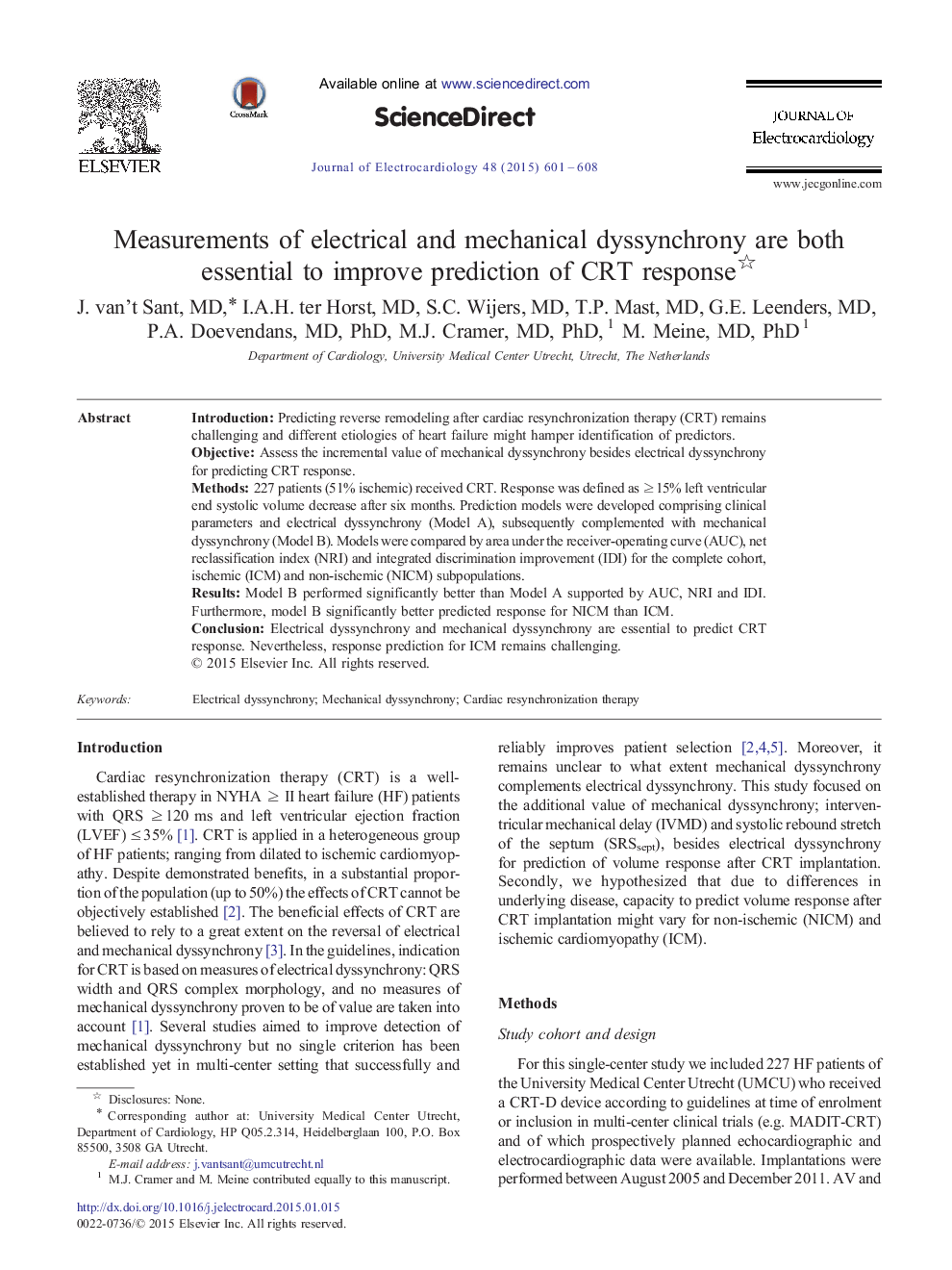| Article ID | Journal | Published Year | Pages | File Type |
|---|---|---|---|---|
| 5986275 | Journal of Electrocardiology | 2015 | 8 Pages |
â¢The combination of electrical and mechanical dyssynchrony is essential for the prediction of volumetric response to CRTâ¢The BLISS model, comprising BNP, LBBB, IVMD, and SRSsept, has very good predictive value concerning volumetric response to CRT in patients with non-ischemic cardiomyopathy
IntroductionPredicting reverse remodeling after cardiac resynchronization therapy (CRT) remains challenging and different etiologies of heart failure might hamper identification of predictors.ObjectiveAssess the incremental value of mechanical dyssynchrony besides electrical dyssynchrony for predicting CRT response.Methods227 patients (51% ischemic) received CRT. Response was defined as â¥Â 15% left ventricular end systolic volume decrease after six months. Prediction models were developed comprising clinical parameters and electrical dyssynchrony (Model A), subsequently complemented with mechanical dyssynchrony (Model B). Models were compared by area under the receiver-operating curve (AUC), net reclassification index (NRI) and integrated discrimination improvement (IDI) for the complete cohort, ischemic (ICM) and non-ischemic (NICM) subpopulations.ResultsModel B performed significantly better than Model A supported by AUC, NRI and IDI. Furthermore, model B significantly better predicted response for NICM than ICM.ConclusionElectrical dyssynchrony and mechanical dyssynchrony are essential to predict CRT response. Nevertheless, response prediction for ICM remains challenging.
